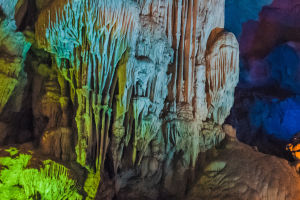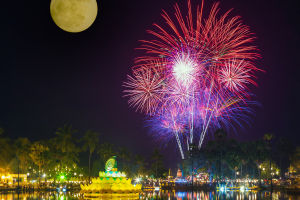Welcome Lykkers! If you're dreaming of an unforgettable adventure surrounded by Africa's most iconic wildlife, Etosha National Park in Namibia is an essential destination.
This guide will walk you through everything you need to know to organize a self-drive safari with complete independence—no need for agencies or rigid group schedules.
Why Etosha Is a Must-Visit
A Unique Natural Setting
Etosha means "great white place" in the Herero language, referring to the massive salt flat covering over 4,700 square kilometers. This surreal landscape creates incredible wildlife viewing conditions, especially during the dry season when animals gather at waterholes.
Exceptional Wildlife Visibility
The low vegetation and sparse tree cover make animal sightings easier than in many other parks. Large mammals, including elephants, lions, zebras, giraffes, and leopards, are commonly spotted, especially near the waterholes scattered across the park.
Easy Access and Well-Maintained Facilities
The park is accessible by sedan or off-road vehicle, although a 4x4 is recommended. Etosha's camps offer accommodations for every budget, along with shops, observation decks, fuel stations, and eateries.
How Many Days to Spend in Etosha
Ideal Length of Stay
A minimum of 3 days and 3 nights is ideal for exploring the park's diverse regions: east, center, and west. This allows ample time for multiple game drives and better chances to spot varied species.
Suggested Itineraries
With just 2 nights: stay one night at Okaukuejo and one at Halali. With more time: add a third night at Namutoni or Dolomite. Staying inside the park also gives access to illuminated waterholes at night.
Best Time to Visit
Dry Season (June to October)
This is the best period for animal sightings. Water becomes scarce, and wildlife gathers near artificial and natural waterholes. The weather is cooler, and the landscape remains open and dry.
Wet Season (November to April)
Rain transforms the salt pan into a shallow lake, attracting thousands of flamingos but dispersing other animals throughout the park. Vegetation becomes thicker, which can make sightings more difficult.
Entering Etosha National Park
Gate Options
There are four gates:
- Anderson's Gate (south, near Okaukuejo)
- Von Lindequist Gate (east, near Namutoni)
- Galton Gate (west, near Dolomite Camp)
- Nehale Lya Mpingana Gate (north, near Onkoshi)
Choose your entrance based on your travel route and overnight accommodation. Entry fees range from Namibian Dollars 80 per adult per day and Namibian Dollars 10 per vehicle. Gates generally open at sunrise and close at sunset.
Planning Your Safari
Vehicle Choice
While a standard car can enter the park, a 4x4 offers more flexibility and comfort, especially on gravel roads. Check tire pressure regularly, and always carry spare tires, water, and a basic toolkit.
Driving Rules
Stay on marked roads, do not exit the vehicle except in designated areas, and respect the speed limits (usually 60 km/h inside the park). Driving is not allowed after dark.
Documents to Carry
Bring a valid international driving permit, passport copies, and all vehicle rental documents, including proof of insurance.
Where to Stay
Main Camps Inside the Park
- Okaukuejo: Known for its iconic waterhole, ideal for evening wildlife observation.
- Halali: Centrally located, perfect for exploring all parts of the park.
- Namutoni: Eastern camp with historical architecture and proximity to wildlife-rich areas.
Exclusive Camps
- Dolomite Camp: Western Etosha's scenic and tranquil area.
- Onkoshi Camp: Remote and eco-friendly, near the salt pan.
- Olifantsrus Camp: A rustic site offering only camping, located in the wild northwest, featuring an excellent hide overlooking a busy elephant waterhole.
Prices
Rates vary based on the type of accommodation. Campsites start from around Namibian Dollars 450 per night, while chalets can range from Namibian Dollars 1,200 to Namibian Dollars 2,500 per night depending on the camp and season. Booking months in advance is strongly recommended, especially from July to October.
What to Expect During the Safari
Game Drives
You can drive yourself along well-marked routes or join guided drives arranged by the camps. Morning and late afternoon are the best times for sightings. Keep a map handy—available at park entrances—and use it to locate popular waterholes.
Camping Options
Campgrounds are equipped with basic amenities like bathrooms, cooking areas, and occasionally swimming pools. If you're using a rooftop tent, designated areas are available in all main camps.
Photography Tips
Dust and lighting can impact your shots, so keep equipment protected. Bring extra batteries and memory cards, and use long lenses for capturing distant wildlife.
Final Thoughts
Etosha National Park offers a rare opportunity to explore a thriving wildlife haven in full independence. With good planning, a reliable vehicle, and a clear itinerary, any visitor can enjoy a safe and unforgettable safari experience. From sunrise waterhole sightings to peaceful nights under the stars, Etosha is a place where nature takes center stage—and where each day offers a new surprise for the adventurous Lykkers.


